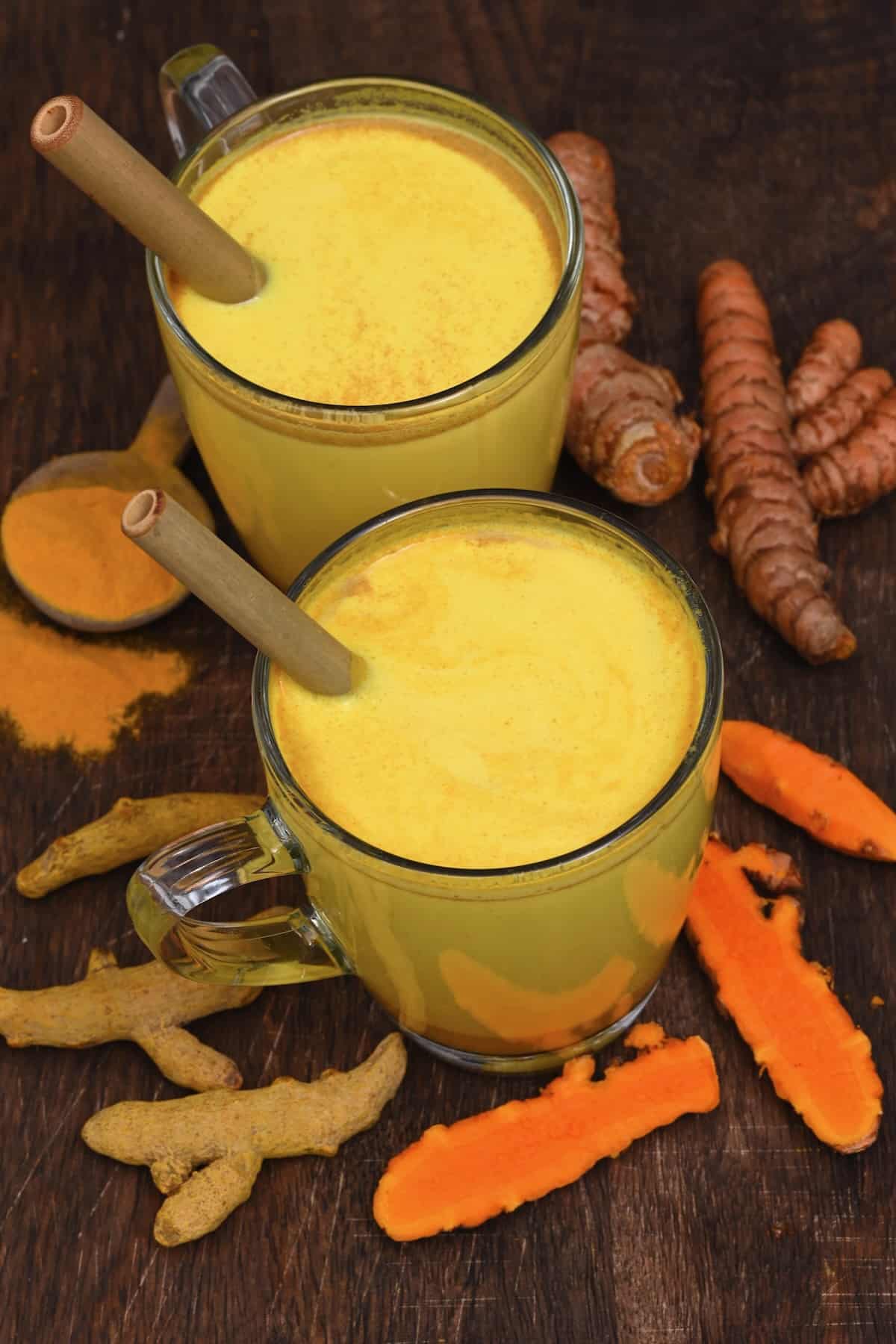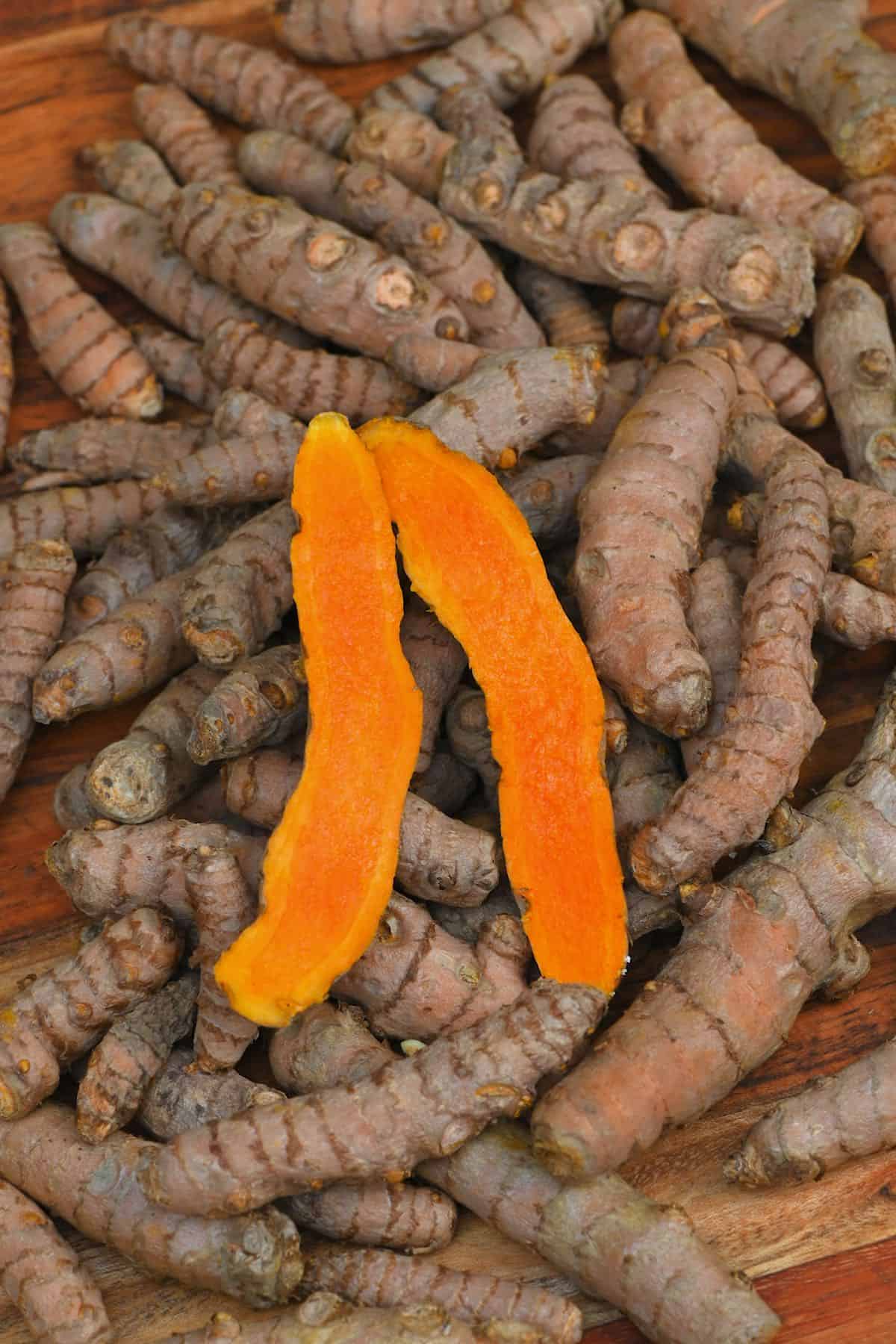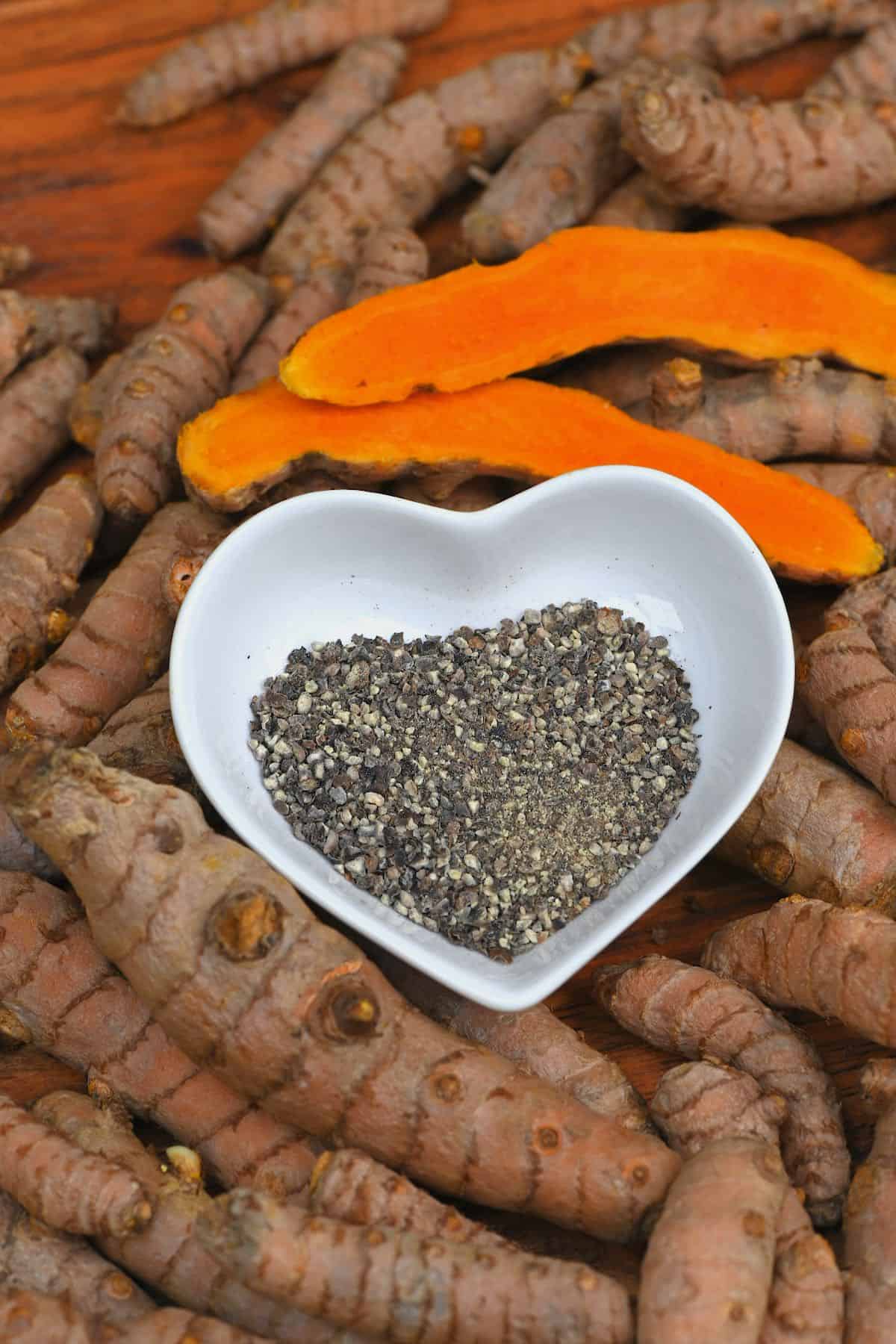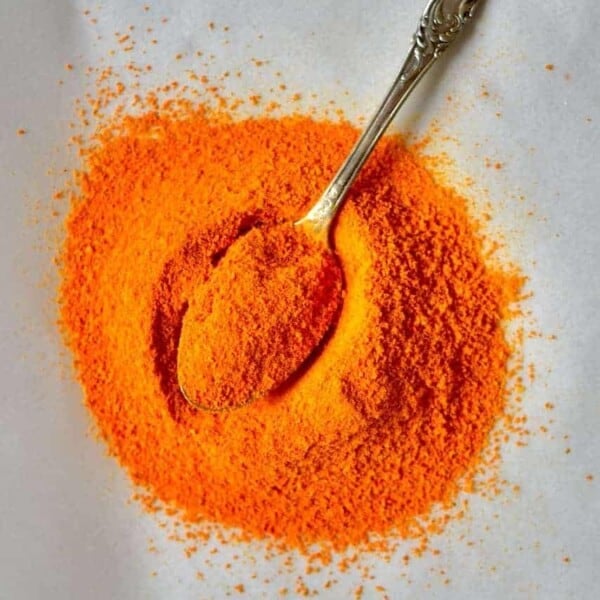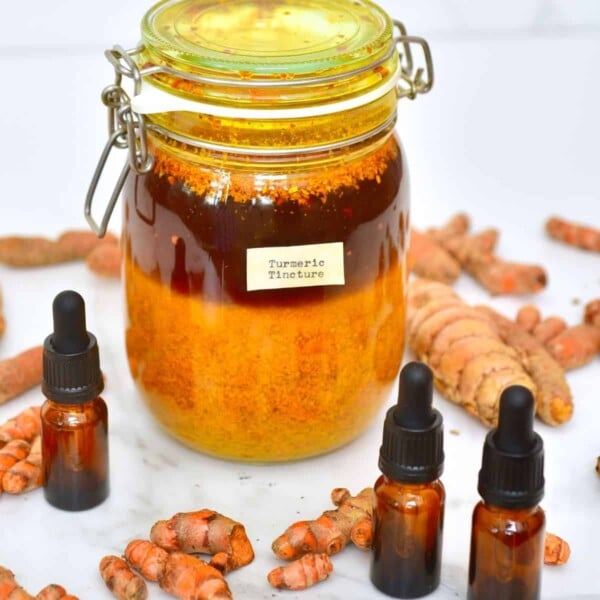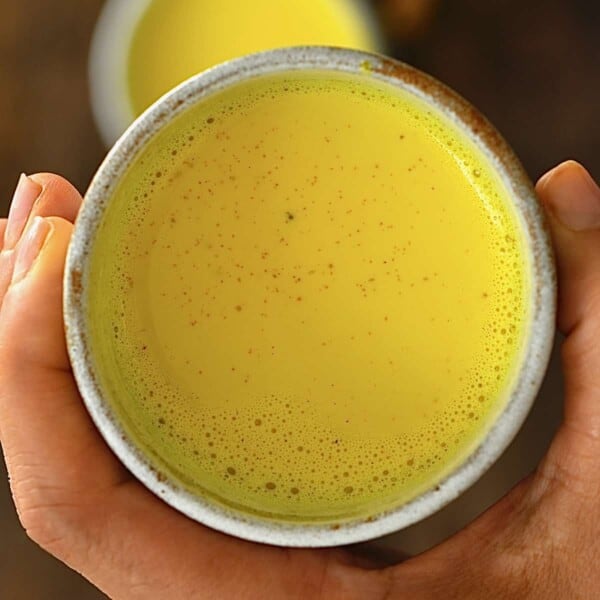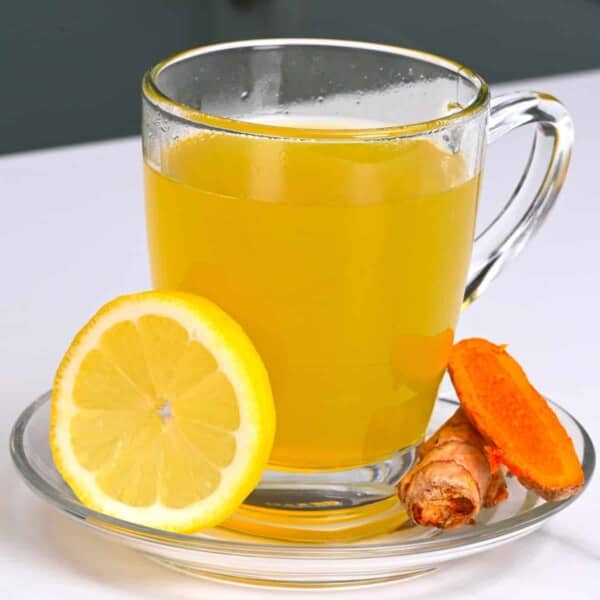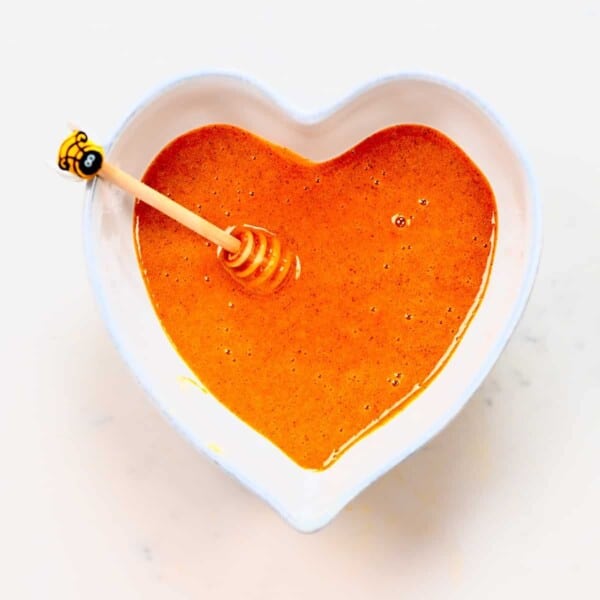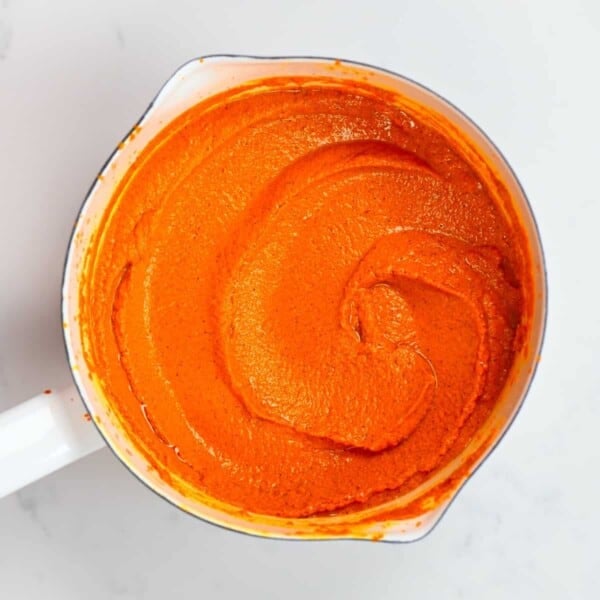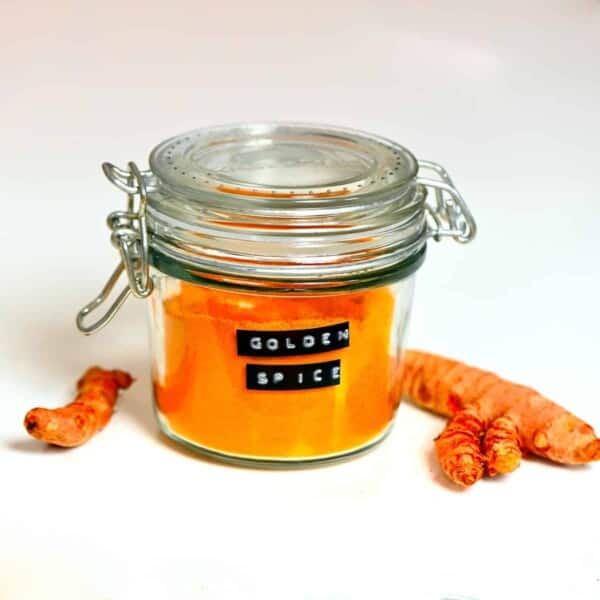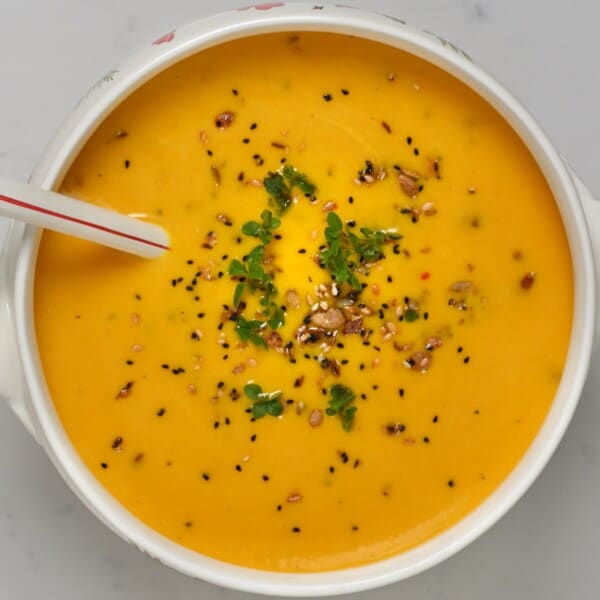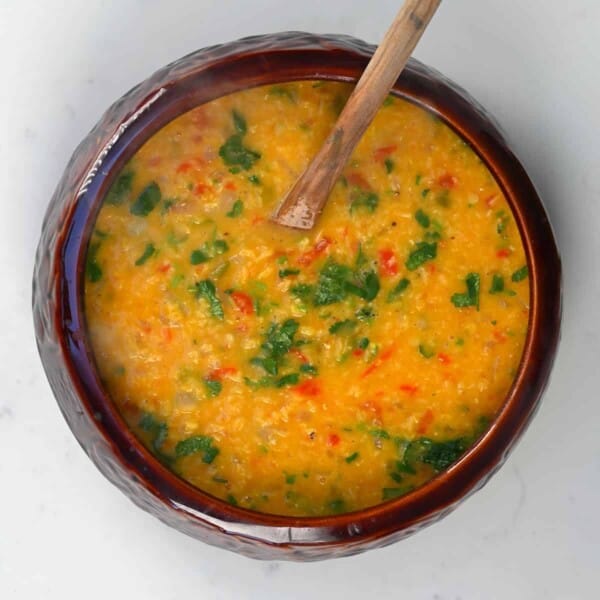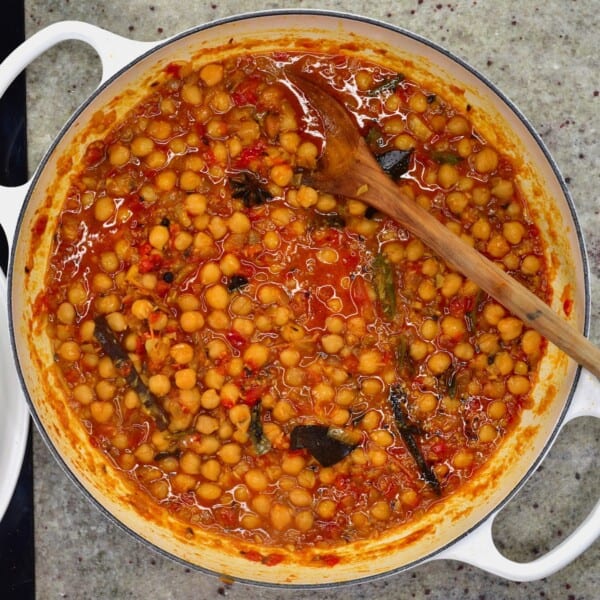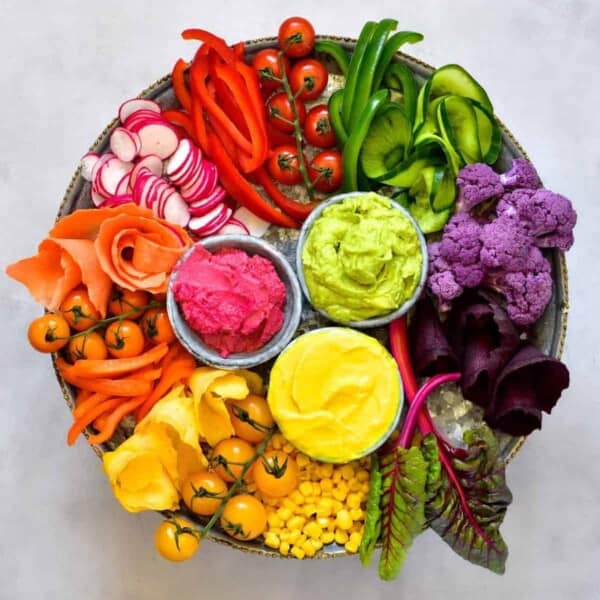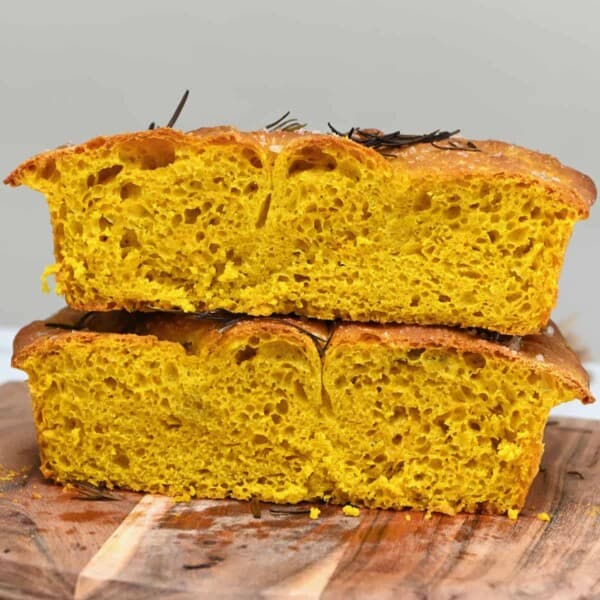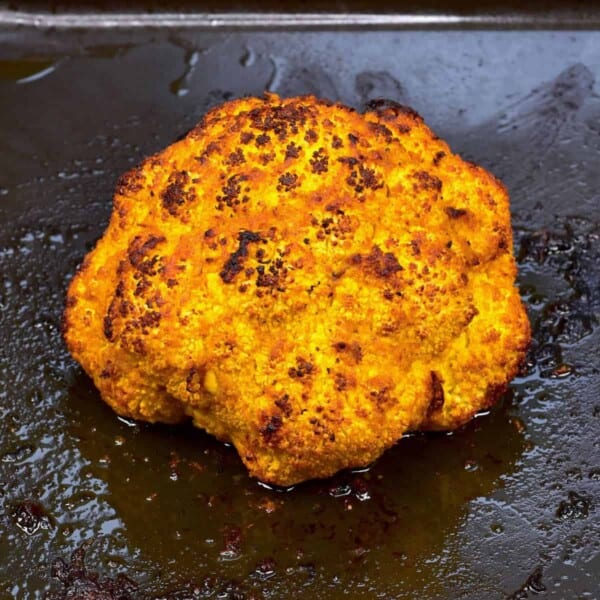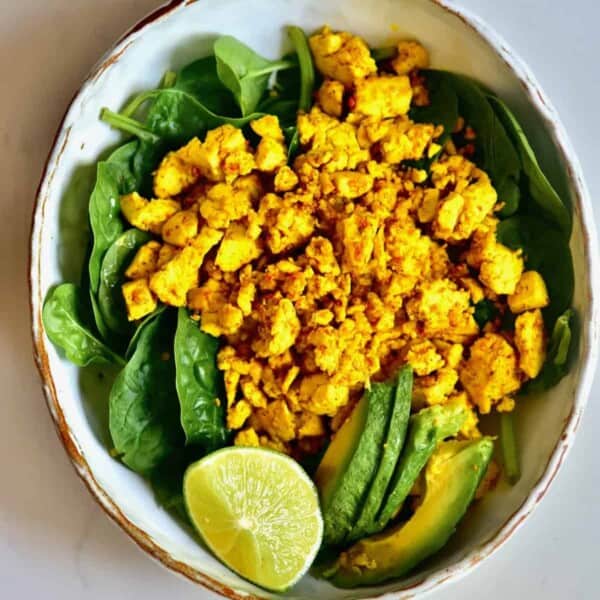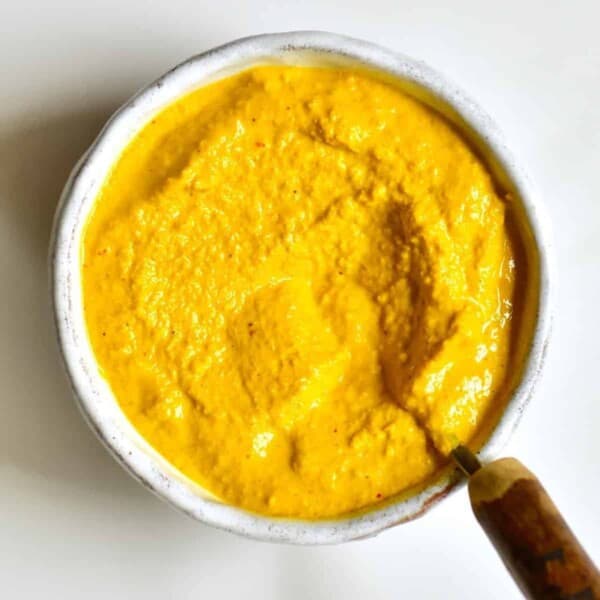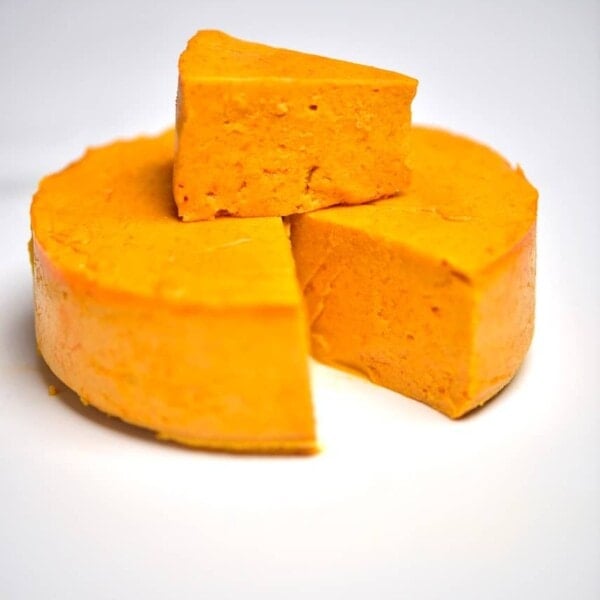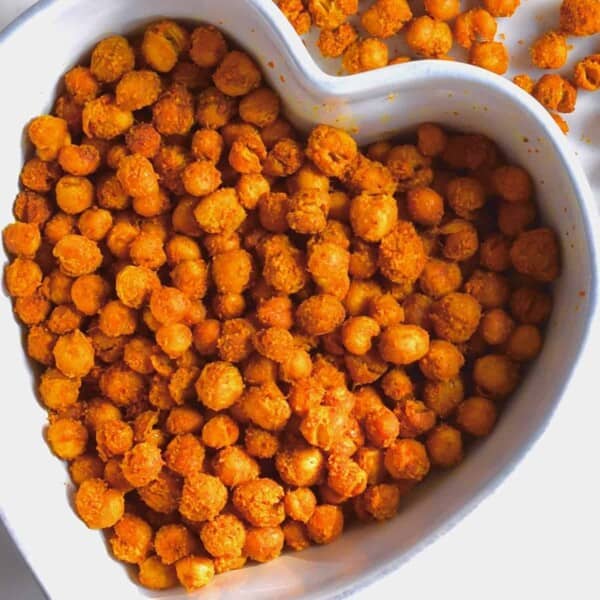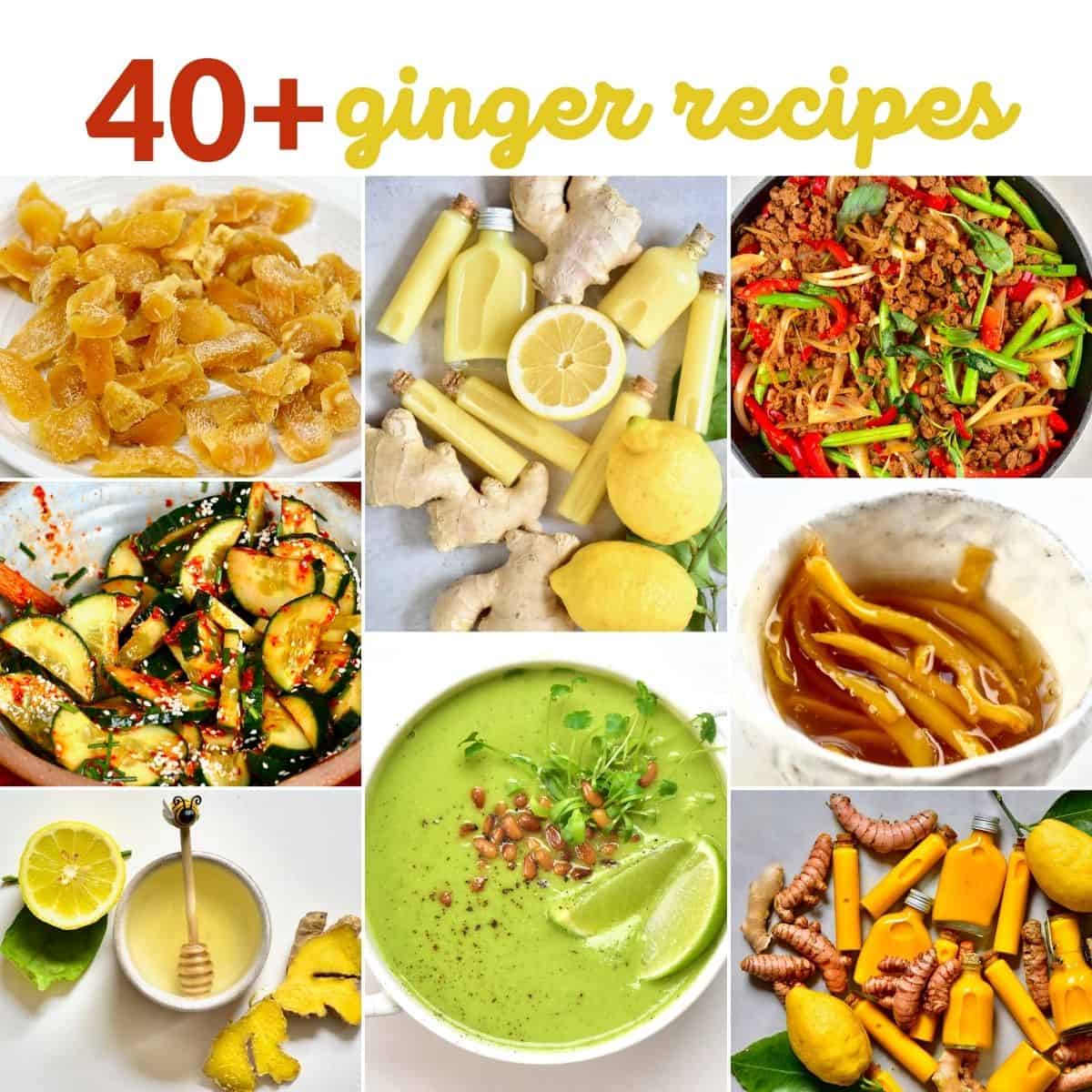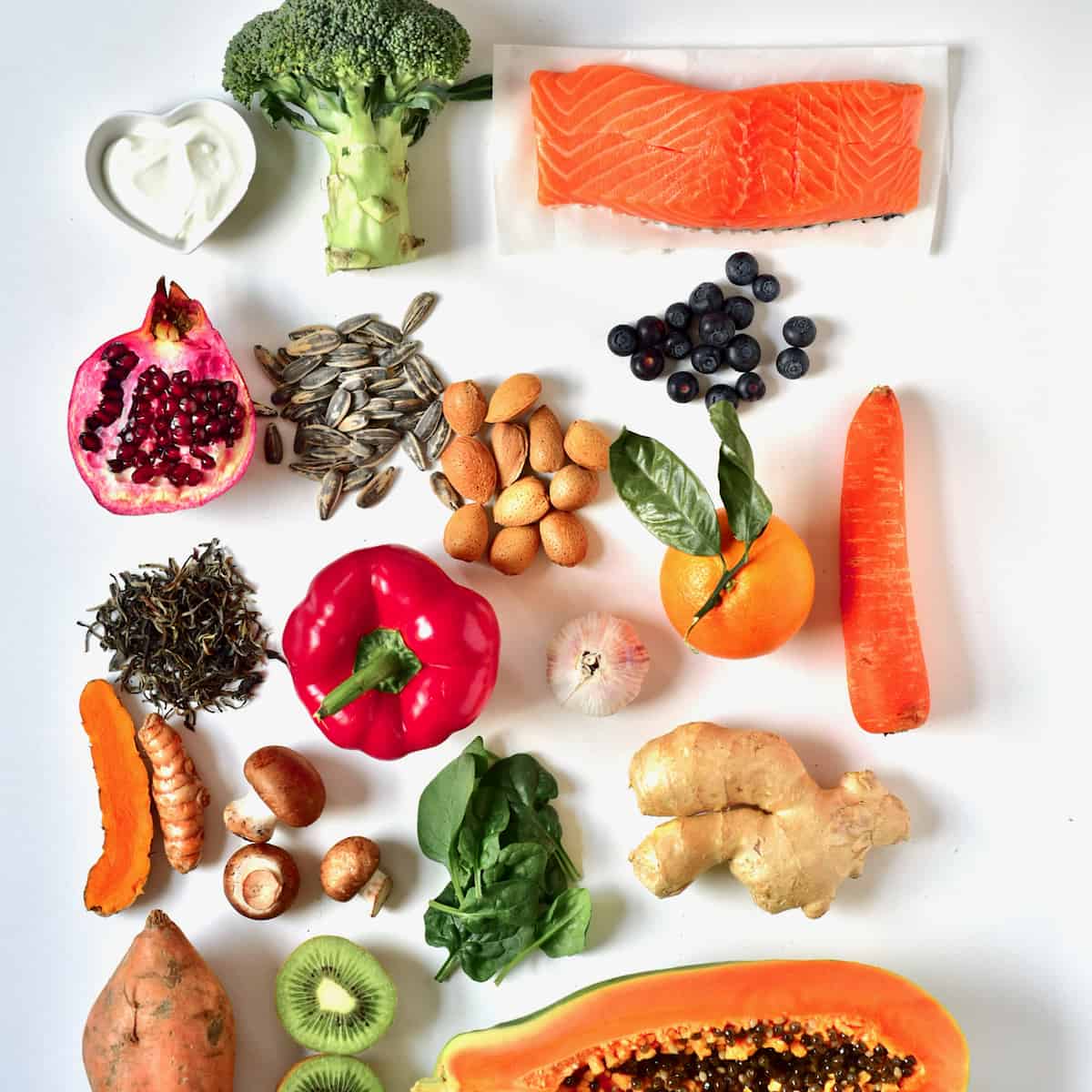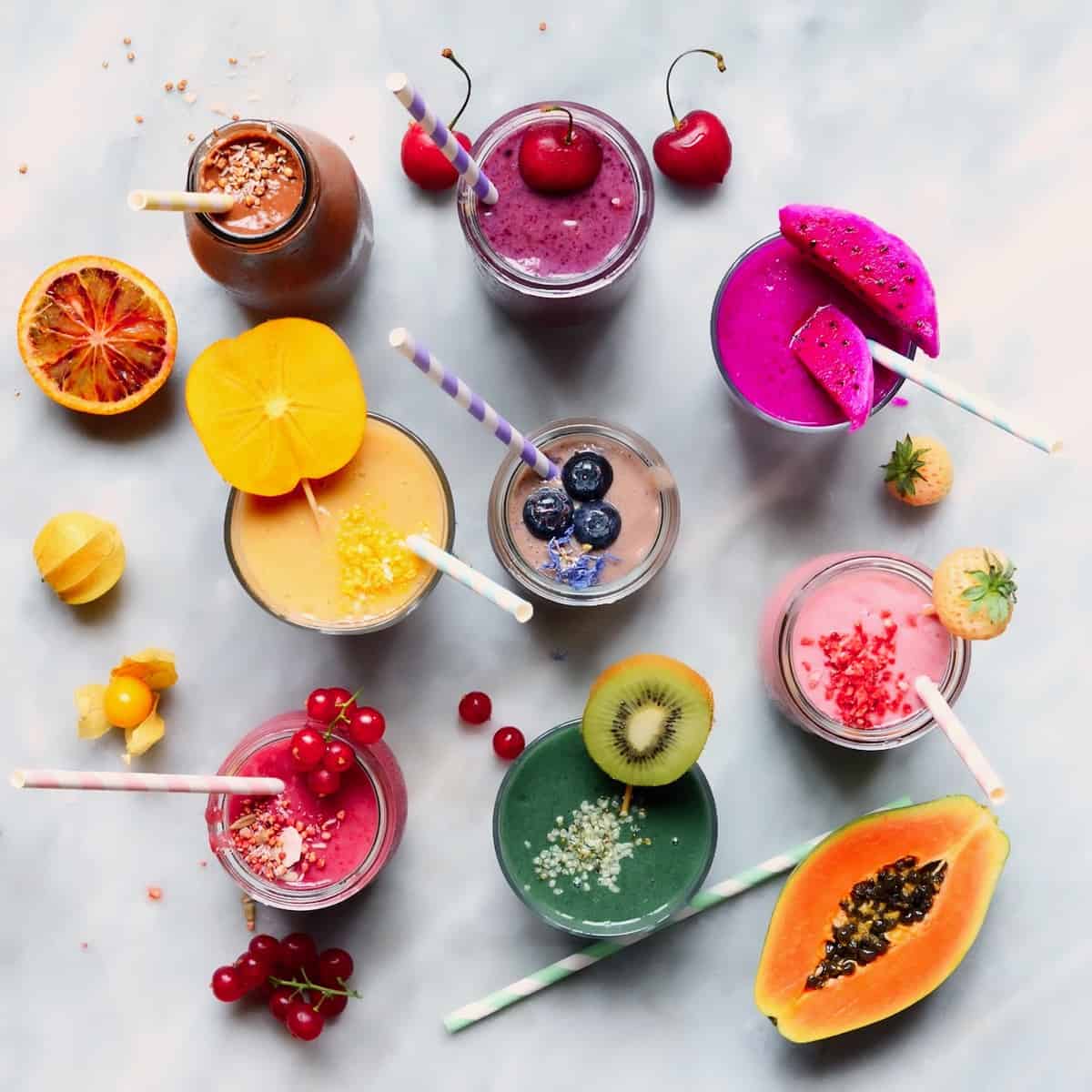There are certain ingredients I HAVE to have on hand at all times. In terms of spices, these include homemade ginger powder, garlic, and turmeric! With a long list of health benefits and an even longer list of ways to enjoy turmeric in food and drinks (fresh or ground), this will quickly become a new kitchen favorite of yours!
What Is Turmeric and Why Is It Good for You?
Turmeric root is native to India and Southeast Asia and comes from a flowering plant in the ginger family (which is why it looks so similar!). It has a vibrant orange-yellow color and has been used for centuries in fresh and powdered form as a natural dye, flavoring, and medicinal purposes – particularly in Ayurvedic medicine – due to its antioxidative and anti-inflammatory properties (among others). However, the many benefits of this root have made their way over Western countries, and in the last few years, it’s become increasingly popular in the UK, EU, and the US, thanks to viral recipes like golden lattes and golden milk. Luckily, which is not always the case with “trendy” ingredients, there is plenty of science to back up the validity of its health claims. So, what is turmeric good for?
Turmeric Health Benefits
There are potent compounds within the turmeric called curcuminoids, primarily “curcumin.” It is behind most of the health benefits of turmeric.
It’s a natural anti-inflammatory: it reduces the risk of several serious chronic health conditions, including heart disease, Alzheimer’s, arthritis, and cancer. Some studies found that turmeric can work as well as, if not better, than certain pharmaceuticals. Antioxidant-rich and can increase the antioxidant capacity of our bodies: To neutralize harmful free radicals and reduce oxidative damage to the body. Anti-cancer properties: A study shows it may even physically stunt the growth of cancerous cells and tumors. Improved blood flow: It may help dilate blood vessels to increase flow and reduce blood pressure. Improves brain health: Some studies have shown that curcumin may increase BDNF levels in the brain. These play an essential role in memory, learning, attention, and the health/life of neurons, and can decrease the risk of brain diseases. It can regulate mood: A study comparing it with Prozac found it may boost the brain’s neurotransmitters, serotonin, and dopamine, which regulate mood.
More so, research has looked into the benefits of turmeric and curcumin regarding their antimicrobial benefits, pain relief, heart health, and blood pressure. In addition, other research shows it may boost our immune system and gut flora, reduce depression symptoms, and improve skin conditions and bone health! It’s important to note that most studies focus on concentrated turmeric supplements (i.e., a powder, tablets, or turmeric extract) for targeted support. However, I always prefer to prioritize dietary nutrition before supplements.
Are There Any Side Effects?
Generally, you’re unlikely to consume enough to experience side effects from turmeric. However:
Use it sparingly, to begin with! A sudden increase (or general overconsumption) may cause stomach upset, nausea, and vomiting. If you’re new to eating it, check with a doctor to ensure it doesn’t react negatively with any medications you’re on! It contains low levels of oxalate. However, when eaten in high doses, this may contribute to kidney stones in those predisposed to get them.
It’s best to refer to a medical professional before consuming large amounts of turmeric. Especially if you have bleeding disorders (and are on blood thinners), diabetes, gallbladder issues, GERD, iron deficiency, liver disease, or are pregnant. You can read more about the potential side effect of turmeric on Healthline.
What Does Turmeric Taste Like?
It has an earthy, slightly bitter, spicy, and peppery flavor. However, most turmeric recipes use it as a spice for seasoning, so it has a fairly subtle flavor. Is turmeric spicy? Not really – it’s more warm and peppery than spicy.
What Is the Best Way to Take Turmeric
Looking at introducing (or increasing) turmeric in your diet? Follow these top tips on how to use it and how to get the most benefits from it.
Purchasing the best quality: When possible, purchase organic from fair trade companies. Also, look out for turmeric powders that contain no fillers or dyes. Eat it with black pepper: To maximize curcumin absorption into the bloodstream, add 3% black pepper. Freshly cracked black pepper increases the absorption by 2000%. Add healthy fats, too: Curcumin is also fat-soluble, meaning it binds to the fat and goes directly to the bloodstream, bypassing the liver, and helping our bodies to absorb it. I recommend healthy fats like avocado oil, coconut oil, or nuts/seeds. Heat it: Heating the root (aka using it when cooking) also helps improve its bioavailability and improves its flavor, too.
I also highly recommend wearing gloves when dealing with fresh turmeric root, as it stains. A lot.
How to Use Turmeric
Cooking with turmeric is very simple as it can be used in similar ways to most spices in many cases; add a pinch and increase to taste. It’s also used to add color to dishes. Here are my top 30+ ideas for how to eat turmeric. So whether you want to increase your intake to get you through cold and flu season or love the flavor, there’s something for everyone!
Simple Turmeric DIYs
Before any turmeric recipes, let’s look at how you can prepare turmeric root, ready to add to other dishes (or enjoy medicinally in the case of the tincture).
Recipes with Turmeric Root
It can be tricky to find fresh root in some countries. However, if you have access, I love to use this vibrant ingredient in several ways. Here are my favorite recipes using fresh root. If you plan to consume it medicinally, my favorite way is either as a tincture or in liquid form as part of a liquid shot. Do so first thing in the morning, on an empty stomach, 30 minutes before having breakfast. This way, you’ll achieve the quickest absorption.
Recipes Using Ground Turmeric
My most common method of cooking with turmeric is with ground spice. However, it’s also great with “raw” recipes, too. Below are some of my favorite ground turmeric recipes. You can easily choose between using the spice fresh or ground in several cases. If you want to convert fresh to dried (or vice versa), remember that one tablespoon of minced turmeric root = ½ teaspoon of turmeric powder.
Turmeric Drink Recipes
There are several ways to use turmeric in drinks. Be it making turmeric tea recipes or golden milk (which combines it with warming spices like cinnamon and ginger) or adding it to juices (listed above) and smoothies. You can also easily add a pinch of turmeric to smoothies (around ¼ tsp maximum) along with a pinch of black pepper. I particularly like adding it to mango smoothies, but you can add it to almost any smoothie.
Soups, Stews, and Curries
The warm and slightly pungent flavor of this root pairs wonderfully with creamy fall/winter soups and curries (both for flavor and color). Add ½ a teaspoon and increase to taste.
Appetizers and Sides
Turmeric uses in cooking are versatile (and delicious) ways to enjoy this spice, and luckily there are PLENTY of different ways to enjoy the spice. So if you’re not in the mood for a warming drink or creamy soup, why not try one of the below dishes to get curcumin in your daily diet? Learning how to cook with turmeric is simple.
Turmeric Dessert and Snack Recipes
How to use turmeric in desserts (and snacks) to enhance rather than overwhelm. Here are several options, whether you want to use it to add color to a dish or for a subtle flavor.
More Recipe Round-Ups
How to Use Ginger in 40+ Ways (Chop, Prepare, and Use Ginger) Top Twenty Immune-Boosting Foods Guide to Healthy Smoothie Recipes 30+ Recipes That Use Garlic As A Main Ingredient
If you try any of these best ways to consume turmeric, let me know how it goes in the comments below. I’d appreciate a recipe card rating and would love to see your recipe recreations – tag me on Instagram @Alphafoodie!













